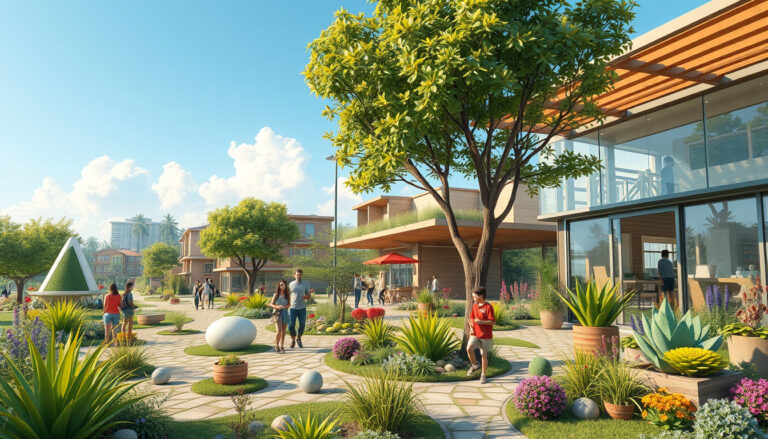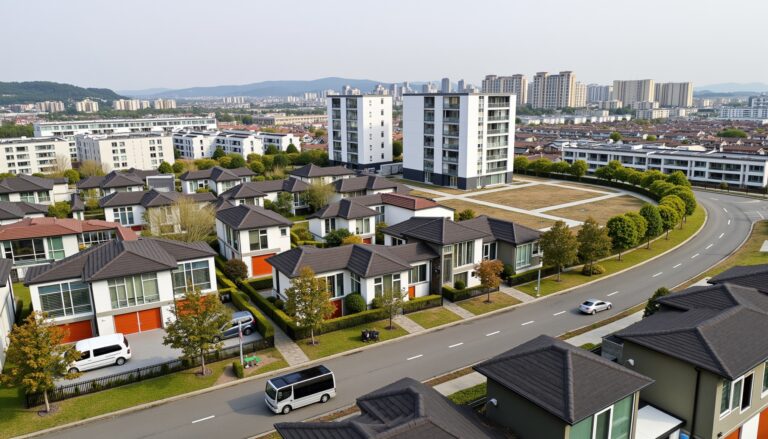Understanding property cycle trends is vital for both investors and homebuyers seeking to make informed decisions in the real estate market.
Whether you are considering purchasing your first home or looking to diversify your investment portfolio, grasping the nuances of property cycles can greatly enhance your ability to capitalize on opportunities and mitigate risks.
In this article, we will delve into the key phases of the property cycle, explore how economic factors influence these trends, analyze historical data for valuable insights, and provide practical strategies for investors and tips for homebuyers to navigate these cycles effectively.


Impact of Economic Factors on Property Cycles
Understanding the impact of economic factors on property cycle trends in Costa Rica is essential for prospective investors and homebuyers alike.
Economic conditions such as interest rates, employment rates, and foreign investment directly influence property cycles in the region.
In periods of economic growth, demand for real estate often increases, resulting in rising property values.
Conversely, during economic downturns, property prices may stagnate or decline.
Additionally, Costa Rica’s appeal as a retirement destination and the influx of expats can significantly sway property cycle trends, creating unique opportunities for those looking to invest in this vibrant market.
By closely monitoring these economic indicators, investors can make informed decisions and strategically navigate the real estate landscape in Costa Rica.
Analyzing Historical Property Cycle Trends
Understanding the historical property cycle trends in Costa Rica is crucial for anyone considering investing in this vibrant real estate market.
Over the past two decades, Costa Rica has experienced significant fluctuations in property values, influenced by various factors ranging from economic shifts to global tourism trends.
The initial boom in the early 2000s attracted numerous foreign investors, leading to an unprecedented rise in property prices.
This was followed by a correction period during the global financial crisis of 2008, where property values stabilized but remained appealing due to the country’s natural beauty and growing expat community.
Since then, a gradual recovery has been evident, with an uptick in both domestic and international demand.
Investors should closely analyze these property cycle trends, as they provide valuable insights into timing their purchases and understanding potential future market movements.
By keeping an eye on historical data, trends in tourism, and socio-economic factors within Costa Rica, you can make informed decisions in this picturesque market.

Strategies for Investors: Navigating Property Cycles
Investing in Costa Rica real estate requires a deep understanding of property cycle trends to make informed decisions.
Property cycles typically consist of stages such as recovery, expansion, contraction, and recession, and understanding where the market currently stands can significantly influence your investment strategy.
Investors should start by conducting comprehensive market research to identify local economic indicators such as job growth, infrastructure projects, and population trends that drive demand for real estate.
Additionally, staying attuned to tourism trends, which heavily impact Costa Rica’s real estate market, can provide valuable insights into future property values.
By leveraging these strategies, investors can position themselves to capitalize on favorable conditions while mitigating risks associated with downturns in the property cycle.
Tips for Homebuyers: Making Informed Decisions
When diving into Costa Rica real estate, understanding property cycle trends can significantly enhance your decision-making process as a homebuyer.
The real estate market, like any other, operates in cycles, characterized by periods of expansion, peak, contraction, and recovery.
By recognizing these trends, you can identify the right time to buy and leverage potential appreciation in property value.
For instance, during the recovery phase, prices often remain manageable, making it an ideal time to invest.
Conversely, during peak times, competition can be fierce, driving prices higher.
Additionally, staying informed about local economic indicators, such as tourism statistics and infrastructure developments, can provide insight into future market movements.
By analyzing property cycle trends, you can make informed decisions that align with your investment goals, ensuring that your venture into Costa Rica real estate is both strategic and rewarding.
Frequently Asked Questions
What are property cycle trends?
Property cycle trends refer to the patterns and fluctuations in real estate markets over time, typically characterized by phases of growth, peak, decline, and recovery.
Understanding these trends helps investors and homebuyers make informed decisions.
What are the phases of the property cycle?
The property cycle consists of four main phases: recovery, expansion, hyper-supply, and recession.
Each phase has distinct characteristics impacting property prices, supply, and demand.
How do economic factors impact property cycles?
Economic factors such as interest rates, employment levels, inflation, and overall economic growth significantly influence property cycles.
For instance, lower interest rates can stimulate demand and lead to a recovery or expansion phase.
How can I analyze historical property cycle trends?
Analyzing historical property cycle trends involves studying past market data, property prices, and economic indicators to identify patterns and forecast future performance.
Tools like graphs, charts, and statistical analysis can be very helpful.
What strategies can investors use to navigate property cycles?
Investors can navigate property cycles by diversifying their portfolios, timing their purchases strategically during down cycles, and staying informed about economic indicators that affect the market.





